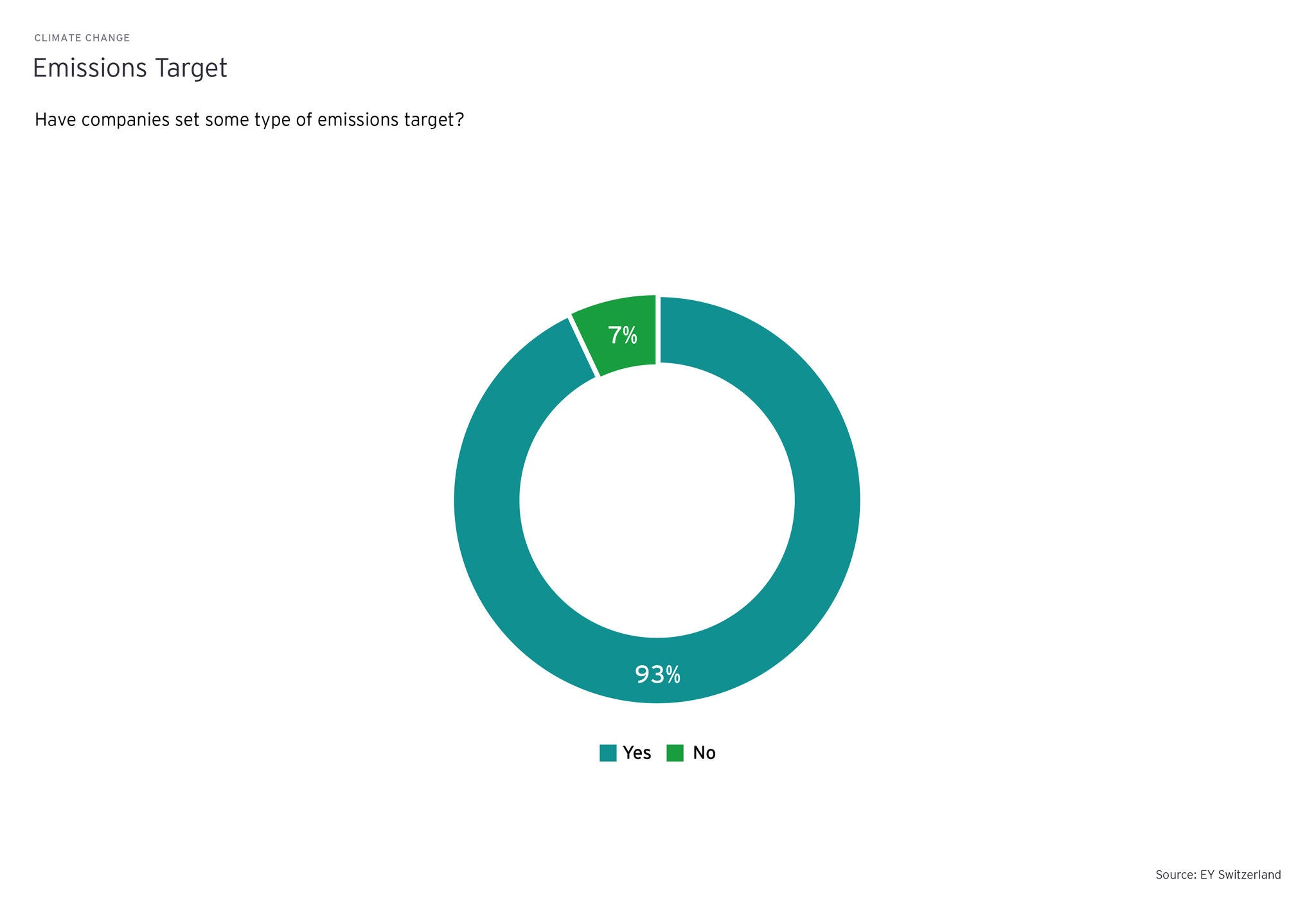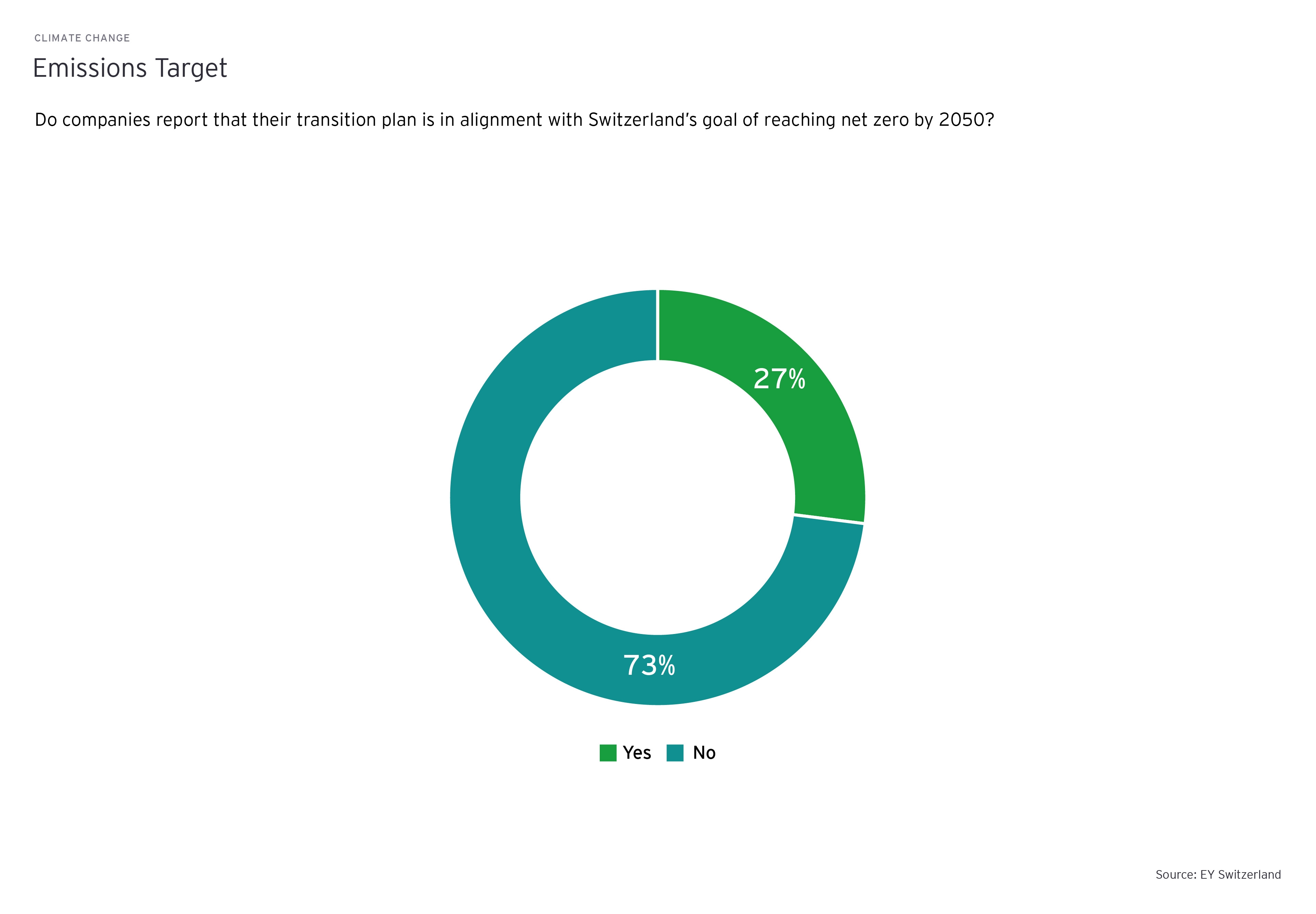EY refers to the global organization, and may refer to one or more, of the member firms of Ernst & Young Limited, each of which is a separate legal entity. Ernst & Young Limited is a Swiss company with registered seats in Switzerland providing services to clients in Switzerland.
How EY can help
-
Discover EY's climate change & sustainability insights, people & services and how they can help your business understand the risks and opportunities.
Read more
A transition plan is a time-bound action plan which outlines how an organization will align its operations and business model with its climate commitments. It contains specific, measurable actions and interim targets to achieve long-term sustainability goals, including physical and financial resilience. A comprehensive climate transition plan also contains governance considerations including key roles and responsibilities for individual functions to establish accountability.3
Of the sampled companies, 87% (13 of 15) had climate transition plans and 92% thereof (12 of 13) stated that they tracked progress quantitatively. In comparison, the EY Global Climate Action Barometer showed that less than half (41%) of companies globally and 59% in the EU had disclosed that they had adopted a transition plan for climate change mitigation.
It should not come as a surprise that climate transition plans are gaining momentum as they are required under numerous regulations and frameworks, including those referenced by the Swiss Ordinance on Climate Disclosures. While current transition plans of Swiss companies can act as a “launchpad” for sustainability planning, quality and rigor of these plans varies as actions to mitigate impact are less developed. 80% of the analyzed companies (12 of 15) have disclosed climate change mitigation actions as decarbonization levers, though only slightly more than half of these companies (58%) quantified expected emissions reductions per lever. Further, half of the sampled Swiss companies disclosing climate change actions as decarbonization levers (6 of 12) also reported on their decarbonization levers disaggregated by scope. In order to fully benefit from the exercise of developing a transition plan, Swiss companies will need to continue comprehensively assessing and quantifying emissions from business activities in their value chains, supporting their path to meeting emissions reduction targets.









